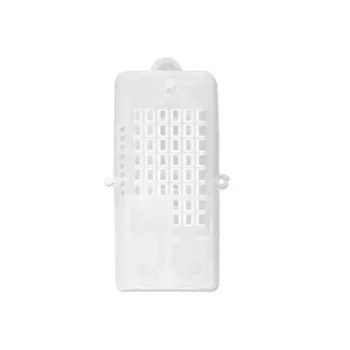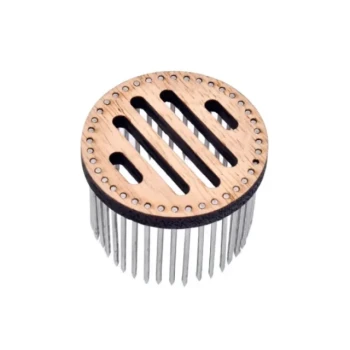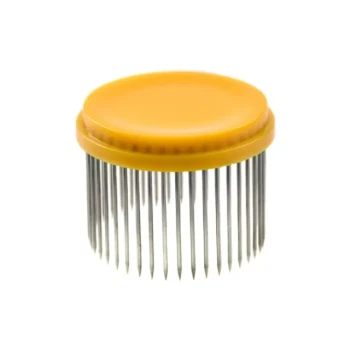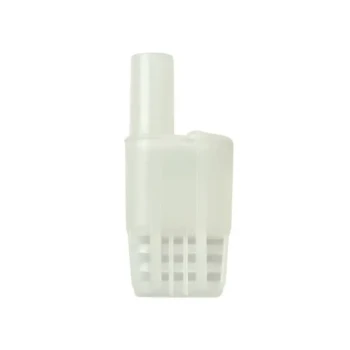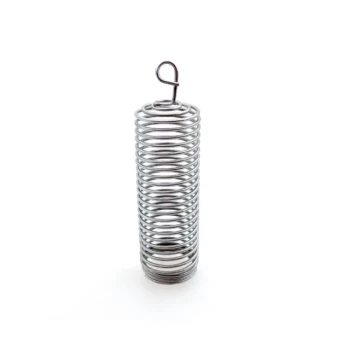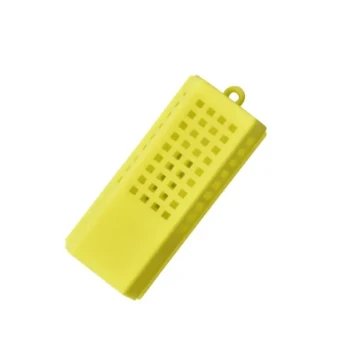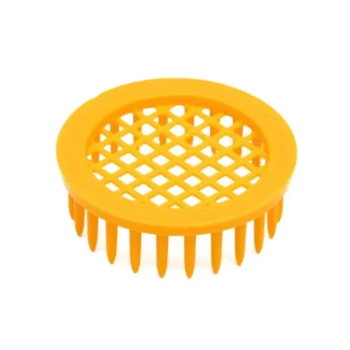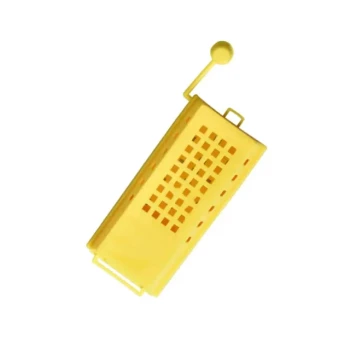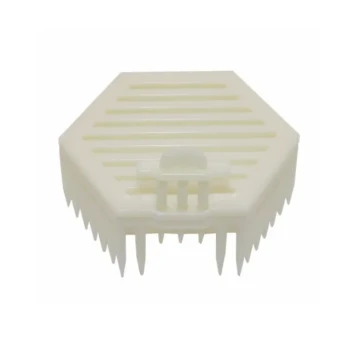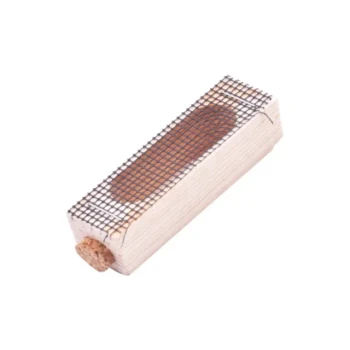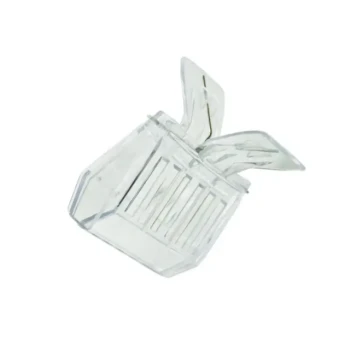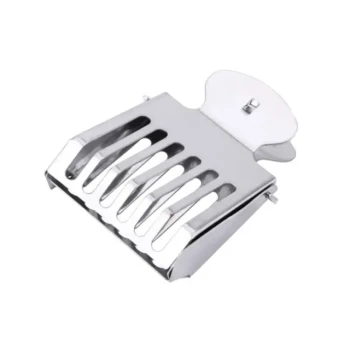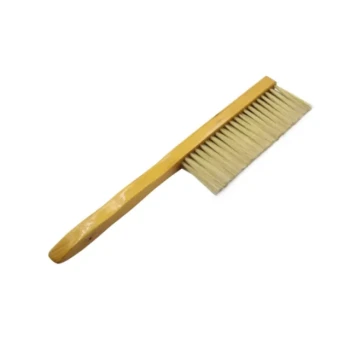The proper method for releasing a new queen is a slow, indirect introduction using the candy plug in her cage. This allows the colony's worker bees several days to acclimate to her specific pheromones, drastically increasing the chances they will accept her as their own rather than killing her as an invader. The goal is not just to free her, but to convince the entire hive that she belongs.
The most common mistake a beekeeper can make is rushing the introduction. A queen's survival depends entirely on the colony's acceptance of her scent, a process that cannot be forced and requires patience.
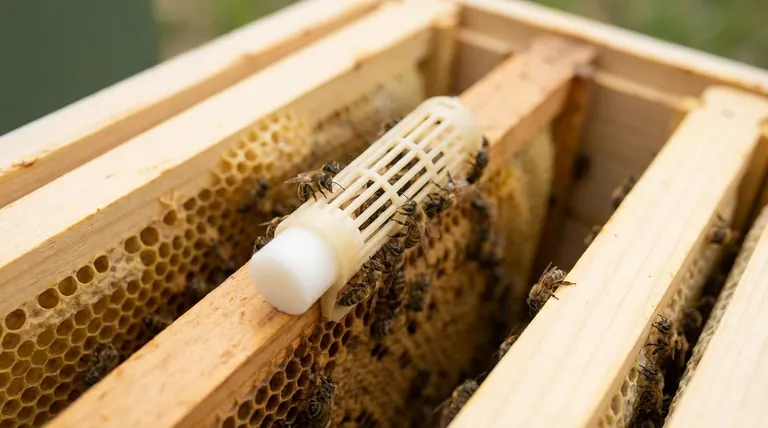
Why a Slow Introduction is Critical
A honeybee colony is a superorganism that operates on scent and instinct. Introducing a new queen is a delicate operation that can easily fail if you don't respect the hive's biology.
The Colony's Default State: Hostility
A foreign bee, especially a queen with a different scent, is perceived as a mortal threat. The workers' immediate instinct is to protect their hive by surrounding and killing the intruder, a behavior known as "balling."
The Role of Queen Pheromones
The queen produces a unique chemical signature called a pheromone that signals her presence and reproductive status. For a new queen to be accepted, her scent must permeate the hive and be accepted by the workers. This process takes time.
The Slow Release Mechanism
The queen cage contains a "candy plug" made of hardened sugar. Placing the cage in the hive allows the workers to interact with the queen through the mesh, slowly getting used to her scent while they eat through the candy to release her.
The Step-by-Step Guide to a Slow Release
This indirect method is the safest and most widely recommended approach for introducing a new queen.
Step 1: Confirm the Hive is Queenless
Before you begin, you must be absolutely certain the colony has no queen. The presence of another queen or even a laying worker will guarantee the new queen is rejected and killed.
Step 2: Prepare the Queen Cage
Your new queen will arrive in a small cage with a few attendant bees. Locate the small cork or plastic tab covering the hole filled with white candy. Carefully remove this tab to expose the candy, creating an exit path. Do not remove the cork on the other end.
Step 3: Place the Cage in the Hive
Gently place the queen cage between two frames in the center of the brood nest, where the young bees are. Position it with the candy-side up to prevent any deceased attendant bees from blocking the exit. Ensure the mesh screen is accessible to the hive's bees.
Step 4: Wait and Minimize Disturbance
Close the hive and leave it completely undisturbed for at least 5-7 days. Opening the hive too soon can cause a panic, resetting the acclimation process and potentially triggering aggression toward the queen.
Understanding the Trade-offs
While the slow release is standard, it's important to understand the alternatives and potential pitfalls.
The Slow Release Method: The Safest Approach
This method is highly reliable because it lets the bees control the timing of the release. They will only free the queen once they have become fully accustomed to her pheromones. This is the recommended method for nearly all beekeepers.
The Direct Release Method: A High-Risk Alternative
Some experienced beekeepers may perform a direct release by manually opening the cage after 3-4 days of introduction. This is risky because you are forcing the introduction. It should only be considered in specific circumstances by a beekeeper who can accurately read the colony's behavior.
Common Pitfall: Checking Too Soon
The single biggest error is impatience. Checking on the queen after only a day or two can alarm the colony. Any disturbance can make the bees see her as the source of the disruption and lead them to attack her, even if the acceptance process was going well.
How to Confirm a Successful Introduction
After waiting a full week, you can perform a quick, calm inspection to verify the introduction was a success.
Step 1: The Initial Check
After 7 days, open the hive and find the queen cage. It should be empty. Look for the queen walking calmly on the frames. If you see bees "balling" her, she has been rejected, and you must intervene.
Step 2: The Ultimate Confirmation: Finding Eggs
The definitive sign of acceptance is seeing new eggs. A successfully introduced queen will typically begin laying within a week of being released. If you see frames with tiny, rice-like eggs—one per cell—your requeening is a success.
Making the Right Choice for Your Hive
Your goal dictates your method, but patience is the universal requirement.
- If you are a new beekeeper or have any doubt: Always use the slow, indirect release method with the candy plug.
- If your colony has been queenless for a long time: It is critical to use the slow release method, as the bees may be more agitated and less predictable.
- If you are an experienced beekeeper managing a gentle hive: You might attempt a direct release after 3-4 days, but you must be prepared to accept the higher risk of failure.
Ultimately, a successful queen introduction relies on allowing the colony's natural biology to run its course.
Summary Table:
| Step | Key Action | Purpose |
|---|---|---|
| 1 | Confirm the hive is queenless | Eliminates competition and aggression |
| 2 | Expose the candy plug in the queen cage | Creates a slow-release exit for the bees to control |
| 3 | Place cage candy-side up in the brood nest | Allows worker bees to acclimate to the queen's pheromones |
| 4 | Wait 5-7 days without disturbance | Gives the colony time to fully accept the new queen |
| 5 | Check for an empty cage and new eggs | Confirms a successful introduction and laying queen |
Equip your apiary for success with HONESTBEE. A successful queen introduction starts with the right equipment. We supply commercial apiaries and distributors with durable, reliable beekeeping supplies, including high-quality queen cages designed for safe introductions. Let our wholesale-focused operations help you build stronger, more productive hives.
Contact HONESTBEE today to discuss your equipment needs and elevate your beekeeping operation.
Visual Guide
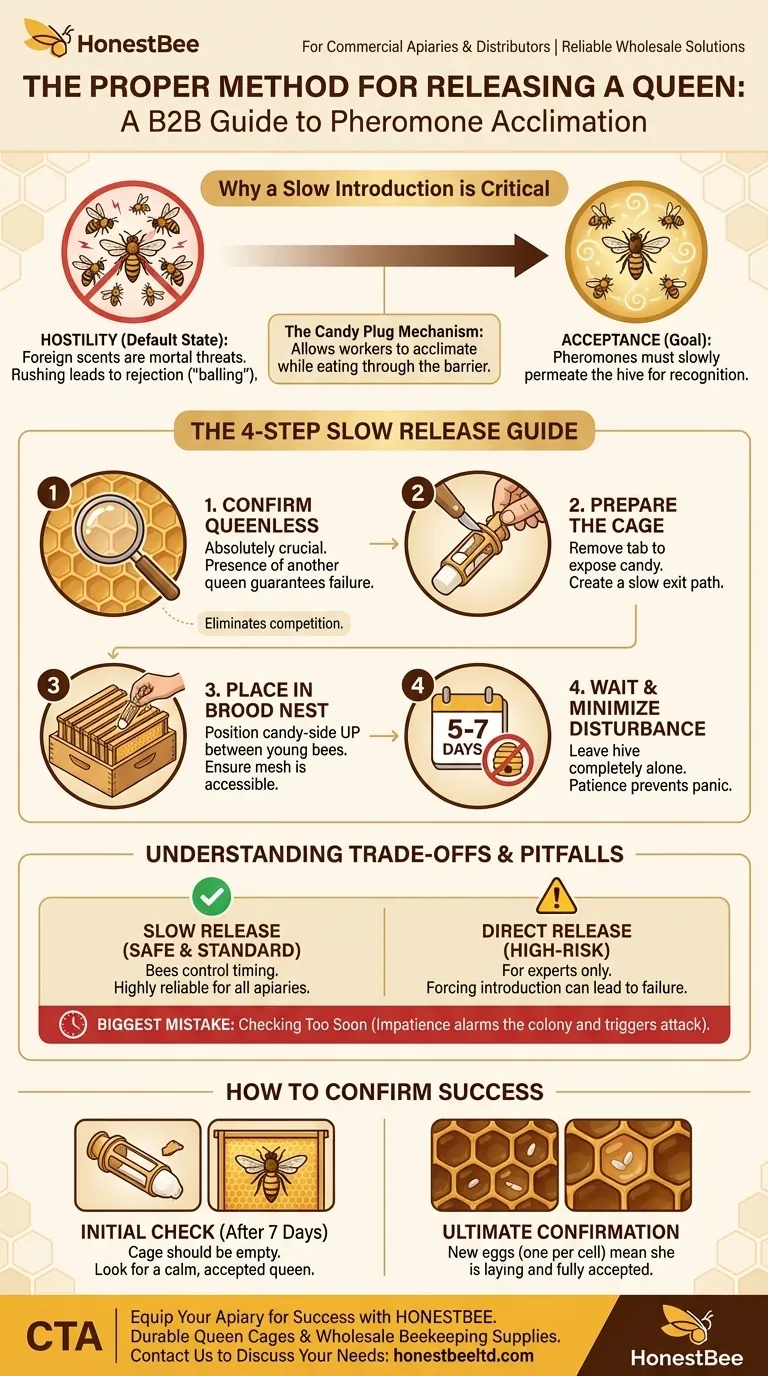
Related Products
- Professional Multi-Functional Queen Bee Cage
- Premium Wood and Steel Push In Queen Cage
- Professional Round Push-In Queen Cage with Metal Tines
- Multi-Function Queen Roller Cage and Catcher
- Durable Galvanized Steel Spring Queen Bee Cage
People Also Ask
- How should a queen cage be maintained over time? Ensure Queen Introduction Success
- What should be done if bees damage the queen cage or harm the queen? Rescue Your Queen and Save Your Hive
- Why might bees reject a new queen? A Guide to Successful Queen Introduction
- What are the components of a standard queen cage? A Guide to Safe Queen Introduction
- What is sequestration, and how does it help bees reorient? A Safer Guide to Hive Relocation
